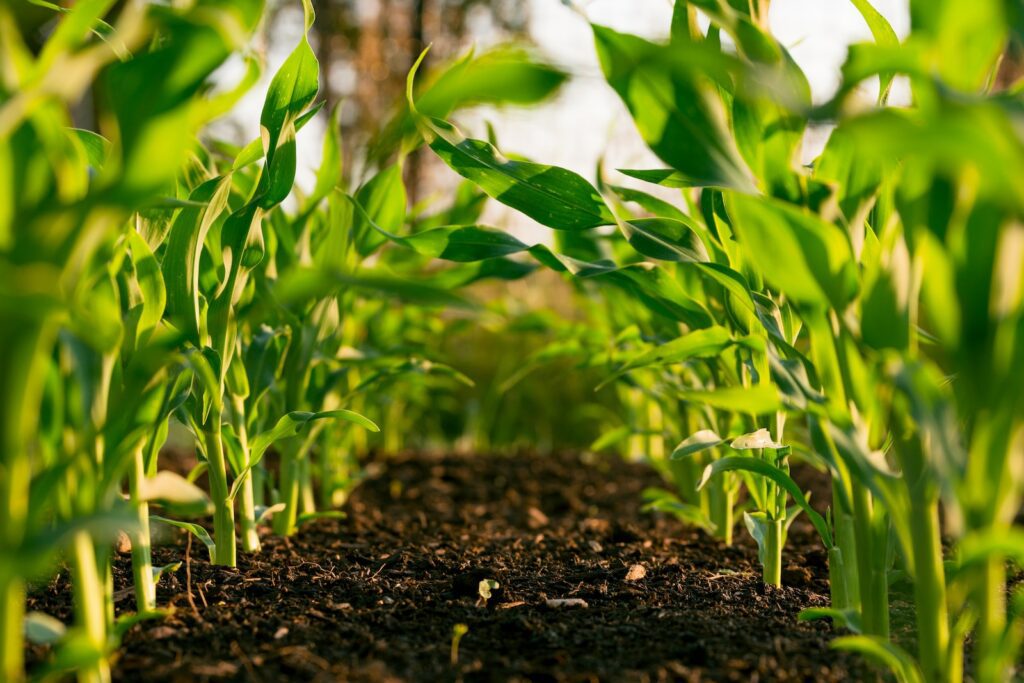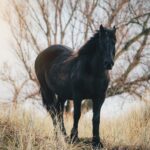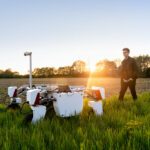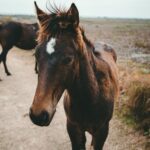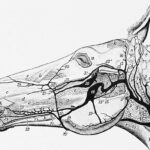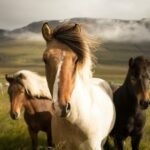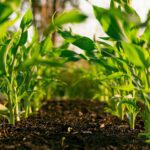Farming utilizes a vast array of terminology and lingo. Even those working in the agriculture industry can get confused by the many specialized terms used in different contexts. This guide covers key definitions and concepts commonly used in agriculture, including livestock, crops, equipment, technology, facilities, and business management.
Livestock Terminology
Different types of livestock have their own unique set of terms to describe the animals, their age and sex, the breeding process, and other aspects of raising them on a farm.
Cattle Terms
- Cow – A mature female bovine animal that has produced calves.
- Calf – A young bovine animal, male or female.
- Heifer – A young female bovine that has not yet produced a calf.
- Steer – A castrated male bovine raised for beef.
- Bull – An intact male bovine used for breeding.
- Herd – A group of cattle raised together on a farm.
- Cud – The partially digested food that cattle regurgitate and chew again as part of their digestive process.
- Grazing – The process of cattle feeding on growing grasses and other vegetation in a pasture or rangeland.
Swine Terms
- Sow – An adult female pig.
- Boar – An adult male pig used for breeding.
- Piglet – A young pig under 4 months of age.
- Farrow – The process of a sow giving birth to piglets.
- Wean – To separate piglets from the sow, allowing them to eat solid food.
- Pen – An enclosure housing a group of pigs.
- Mud wallow – An area pigs use to cool off in the mud.
Poultry Terms
- Pullet – A young female chicken before it begins laying eggs.
- Layer – A mature hen raised to produce eggs for consumption.
- Broiler – Chickens bred specifically for meat production.
- Rooster – A mature male chicken.
- Chick – A newly hatched chicken.
- Brood – A group of chicks or other young fowl.
- Pecking order – The social hierarchy established within a flock of chickens.
Sheep Terms
- Ewe – A mature female sheep.
- Lamb – A young sheep under 1 year of age.
- Ram – A male sheep used for breeding.
- Wether – A castrated male sheep.
- Flock – A group of sheep living and grazing together.
- Shearing – Removing the wool from a sheep.
- Ear tag – Plastic tag placed in the ear of sheep for identification.
Goat Terms
- Doe – A mature female goat.
- Kid – A young goat under 1 year of age.
- Buck – An adult male goat.
- Wether – A castrated male goat.
- Herd – A group of goats raised together.
- Browse – Goats eating leaves, twigs and shoots of woody plants.
- Heat – The period when a doe is receptive to breeding.
Horse Terms
- Mare – An adult female horse.
- Stallion – A mature male horse used for breeding.
- Gelding – A castrated male horse.
- Foal – A young horse under 1 year of age.
- Colt – A male foal.
- Filly – A female foal.
- Yearling – A horse between 1 and 2 years of age.
Crop Terminology
Raising crops also involves specialized language to describe the various stages of growth, components of the plants, and terms involved in planting, managing and harvesting them.
Parts of Plants
- Root – The underground portion of a plant that absorbs water and nutrients.
- Stem – The above ground structure that supports leaves and flowers.
- Leaf – The above ground organ where photosynthesis occurs.
- Flower – The reproductive structure of plants.
- Fruit – The seed-bearing part of certain plants.
- Seed – The embryonic plant contained within a fruit or cone.
Types of Crops
- Grains – Crops grown primarily for their edible seeds, like wheat, corn and barley.
- Oilseeds – Crops like canola, soybeans and sunflowers grown for oil.
- Forages – Crops like hay, silage and alfalfa harvested for livestock feed.
- Vegetables – Crops harvested for human consumption like potatoes, carrots and lettuce.
- Fruit – Sweet and juicy produce like apples, berries and melons.
Stages of Plant Growth
- Germination – The initial sprouting of a seed.
- Vegetative stage – The period of leaf growth and plant establishment.
- Flowering stage – When the plant produces flowers.
- Fruiting stage – When flowers are pollinated and produce ripe fruits/seeds.
- Senescence – The end stage when the plant dies back for the season.
Harvesting and Processing Terms
- Combine – Machine that reaps, threshes and cleans grain while moving through the field.
- Swathing – Cutting and arranging crops into rows to dry before combining.
- Baling – Compressing and binding harvested crops like hay into bales.
- Threshing – Separating grain seeds from stalks and husks.
- Shelling – Removing grains like corn from the cob or hull.
Seed Terminology
- Hybrid – Offspring from crossing two genetically distinct parent plants.
- Heirloom – Older open-pollinated varieties passed down for generations.
- GMO – Genetically modified organism with DNA artificially altered in a lab.
- Certified seed – Seed verified by inspection to meet purity standards.
- Seed drill – Device that sows seeds in uniform rows at desired depth and spacing.
Equipment and Technology
Operating a successful modern farm involves using various types of mechanical equipment, as well as adopting new technologies.
Major Types of Farm Equipment
- Tractor – A powerful and versatile vehicle used to pull farming implements.
- Plow – Device pulled by a tractor used to turn and break up soil.
- Cultivator – An implement to stir and pulverize soil around crops.
- Sprayer – Equipment to apply herbicides, pesticides and fertilizer.
- Combine harvester – Machine to reap, thresh and clean grain crops.
- Forage harvester – Cuts and chops crops to be ensiled.
Parts of Equipment
- Drawbar – Part of a tractor where implements are hitched.
- PTO (power take-off) – The rotating driveshaft used to power implements.
- Hydraulics – Pressurized fluid system that powers certain functions.
- Header – Cutting component on front of combine or forage harvester.
- Reel – Rotating arm on a header that pulls in crops.
- Auger – Conveys grain into storage after threshing.
New Technology
- GPS – Global positioning system helps guide tractors and produce field maps.
- GIS – Geographic information system stores and analyzes spatial data.
- Auto-steering – Tractors can drive precise paths without human guidance.
- Telematics – Wireless transfer of data like engine diagnostics.
- Drones – Unmanned aerial vehicles used for crop monitoring.
- Robotic milking – Automated milking systems for dairy cows.
Land and Facilities
In addition to machinery, a farm requires buildings and land tailored to the type of agricultural production.
Types of Farms
- Crop farm – Grows crops like grain, vegetables and hay.
- Dairy farm – Specializes in milk production.
- Cattle feedlot – Feeds cattle until finished for slaughter.
- Poultry farm – Raises chickens, turkeys or other fowl.
- Hog farm – Raises pigs and hogs.
- Mixed farm – Combines livestock, crops and other farm activities.
Parts of Barns and Facilities
- Pen – Enclosed area to contain livestock.
- Stanchion – Device to restrain a cow during milking.
- Free stall – Enclosure where cow can rest and move freely.
- Waterer – Plumbing system that provides drinking water.
- Ventilation – System to circulate fresh air in the barn.
- Manure gutter – Channel to collect animal waste.
Fencing and Water Systems
- Woven wire fence – Fencing constructed from horizontal and vertical wires.
- Electric fence – Wire fence electrified to discourage animals.
- High tensile fence – Sturdy fence using tightly stretched high tensile steel wire.
- Windbreak – Rows of trees planted to protect from wind.
- Well – Provides access to underground water reserves.
- Dugout – Man-made pond that collects runoff water.
Business and Management Terms
Like any enterprise, farms must be managed and operated in a cost-effective and financially sustainable manner.
Economics, Marketing and Accounting
- Input costs – Expenses like seed, fertilizer, equipment costs.
- Fixed costs – Costs that don’t change with production volume like land and buildings.
- Variable costs – Expenses that depend on the amount produced.
- Gross margin – Revenue from an enterprise minus its variable costs.
- Net farm income – Revenue left after all farm expenses are paid.
- Commodity – An agricultural product sold in bulk without differentiation.
Labor and Personnel Management
- Owner-operator – Farmer who owns and works the land.
- Part-time vs full-time labor – Workers employed seasonally or year-round.
- Compensation – Wages and benefits provided to employees.
- Skills training – Educating workers to properly perform tasks.
- Farm succession – Transferring ownership to the next generation.
Certification Programs
- Organic – Food certification for ecologically produced crops and livestock.
- Kosher – Certification that food is produced according to Jewish dietary laws.
- Non-GMO – Verification that crops were produced without genetic engineering.
- Fair trade – Products derived transparently with fair compensation to producers.
- Animal welfare – Certifying proper ethical treatment of livestock.
Conclusion
Farming employs a vast array of unique terminology to describe its many processes, components, equipment, facilities and business practices. Understanding the key terms used in agriculture enables better communication between farmers, farm workers, and others involved in the industry. As agriculture continues evolving with new technologies and techniques, even more terms will emerge to describe innovations in growing and raising food to feed a growing world population.
